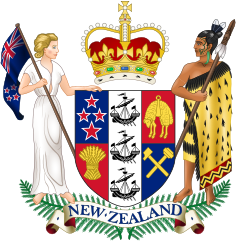| Arms Act 1983 | |
|---|---|
 | |
| New Zealand Parliament | |
| |
| Royal assent | 29 November 1983 |
| Commenced | 1 June 1984 |
| Administered by | New Zealand Police |
| Status: Amended | |
In New Zealand, the Arms Act 1983 is the primary statute controlling the possession and use of firearms and air guns.